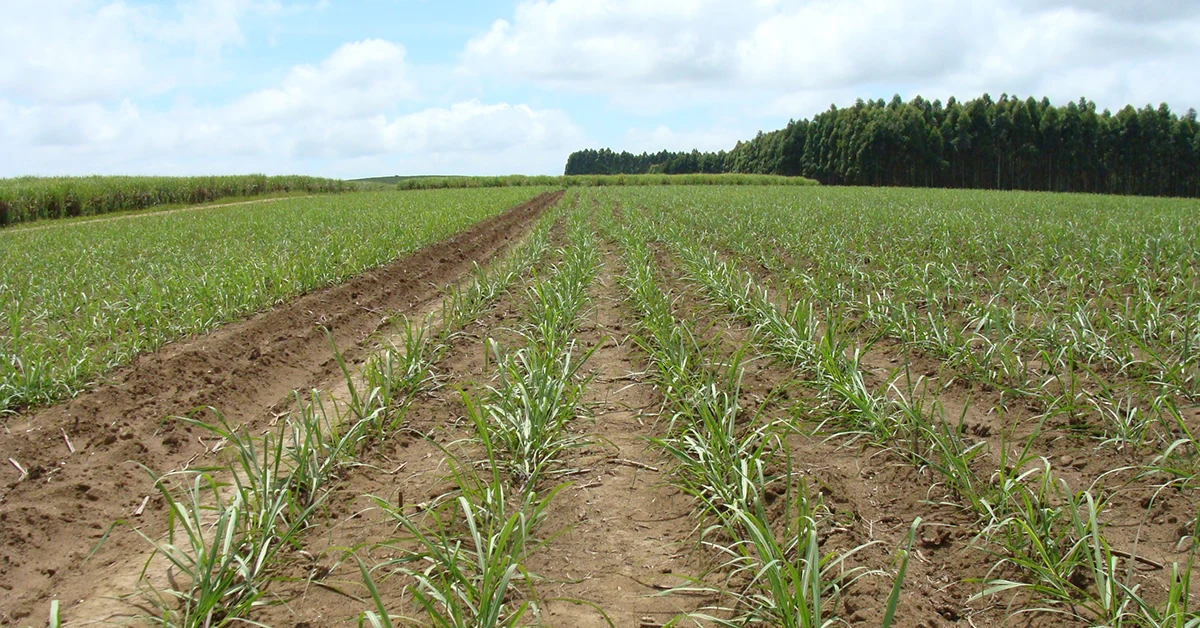
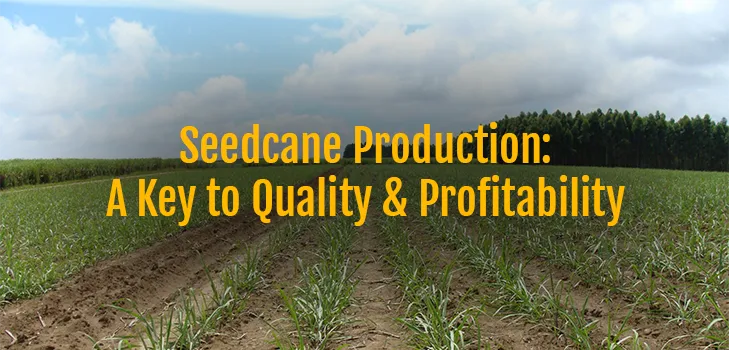

Sharon McFarlane (Pathologist) and Rowan Stranack (Former SASRI Extension and Biosecurity Manager)
One of the key aspects of ensuring a profitable, healthy sugarcane crop is the planting of good quality seedcane. This crucial practice has numerous benefits which include:
- A reduced risk of pest and disease outbreaks in commercial fields (e.g. RSD, smut, mosaic and eldana), therefore a reduced requirement for costly replanting.
- Improved germination which leads to rapid growth of a uniform stand minimising the need for gap filling and weed control after planting. This also results in the improved likelihood of higher yields.
- Varietal purity.
The production of seedcane is governed by the Local, Pest, Disease and Variety Control Committee (LPD&VCC) regulations which are aimed at ensuring the sustainability of all growers and the industry at large in the face of a number of serious and potentially damaging biosecurity threats. LPD&VCC regulations require that all commercial sugarcane fields be planted with either certified or approved seedcane. These terms refer to the two different classes of seedcane registration.
What is certified and approved seedcane?
Seedcane production starts with certified seedcane. A certified nursery is established using hot water treated (HWT) whole-stick certified seedcane, HWT single-budded sett transplants or NovacaneR plantlets. This is the nucleus seedcane material from which approved nurseries are established. A certified nursery may be cut twice (plant and first ratoon) to plant an approved nursery –this (the certified seedcane) does not need to be HWT before being planted into an approved seedcane nursery. Approved nurseries in turn produce the seedcane to plant commercial sugarcane fields (again two cuts are permitted, and this also does not need HWT).
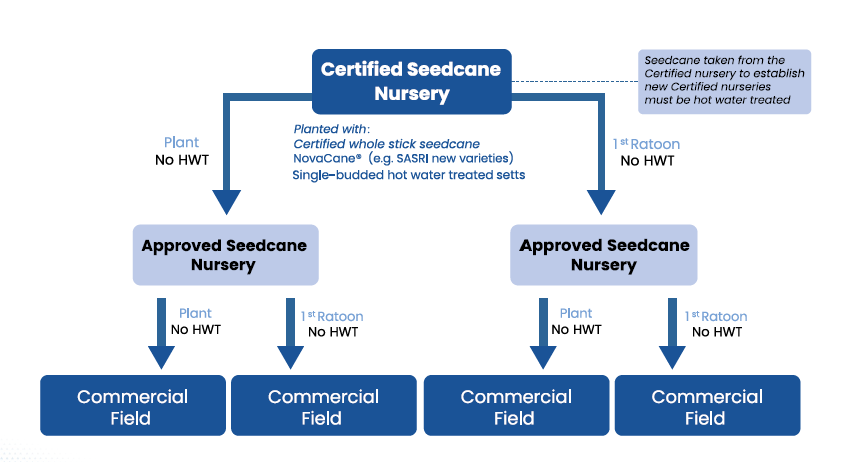
Certified and approved (bulking) phases of seedcane production.
Below are two tables highlighting the required standards for these two classes of nursery seedcane registration:
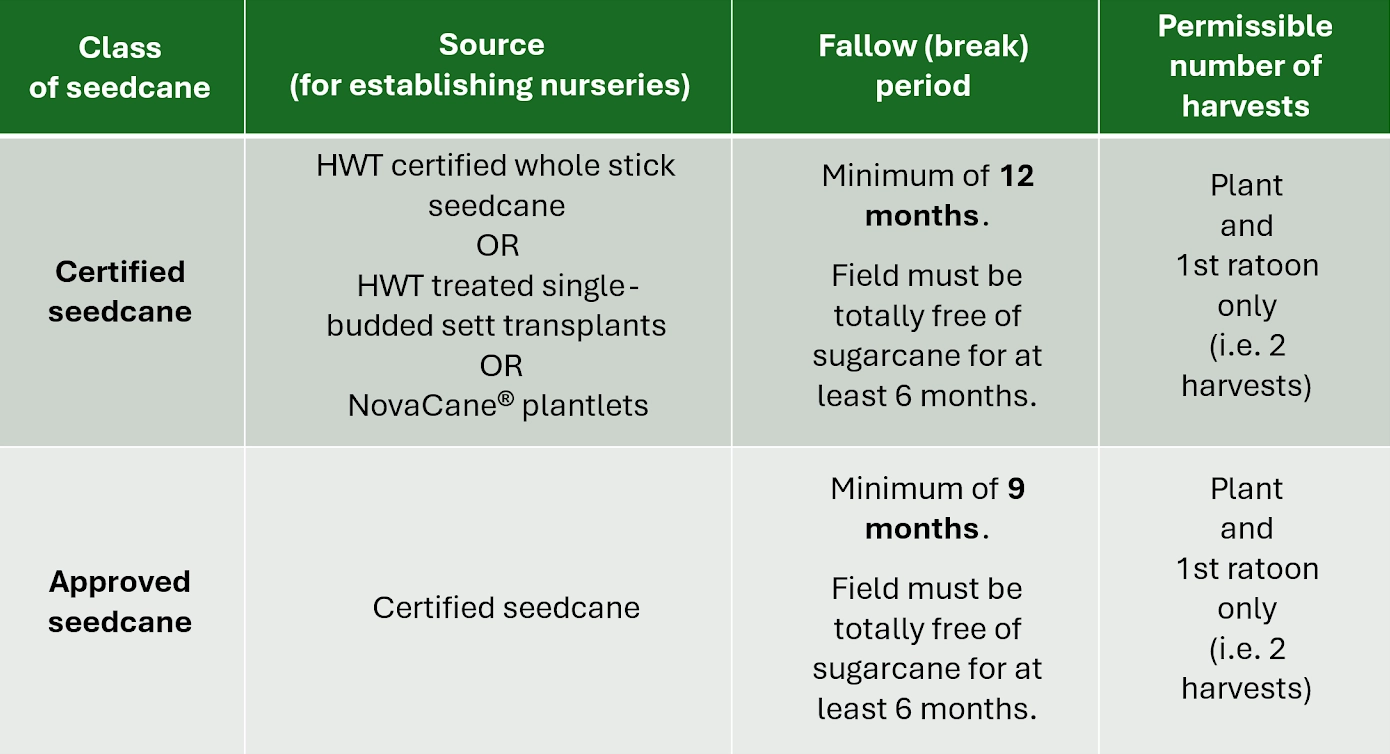
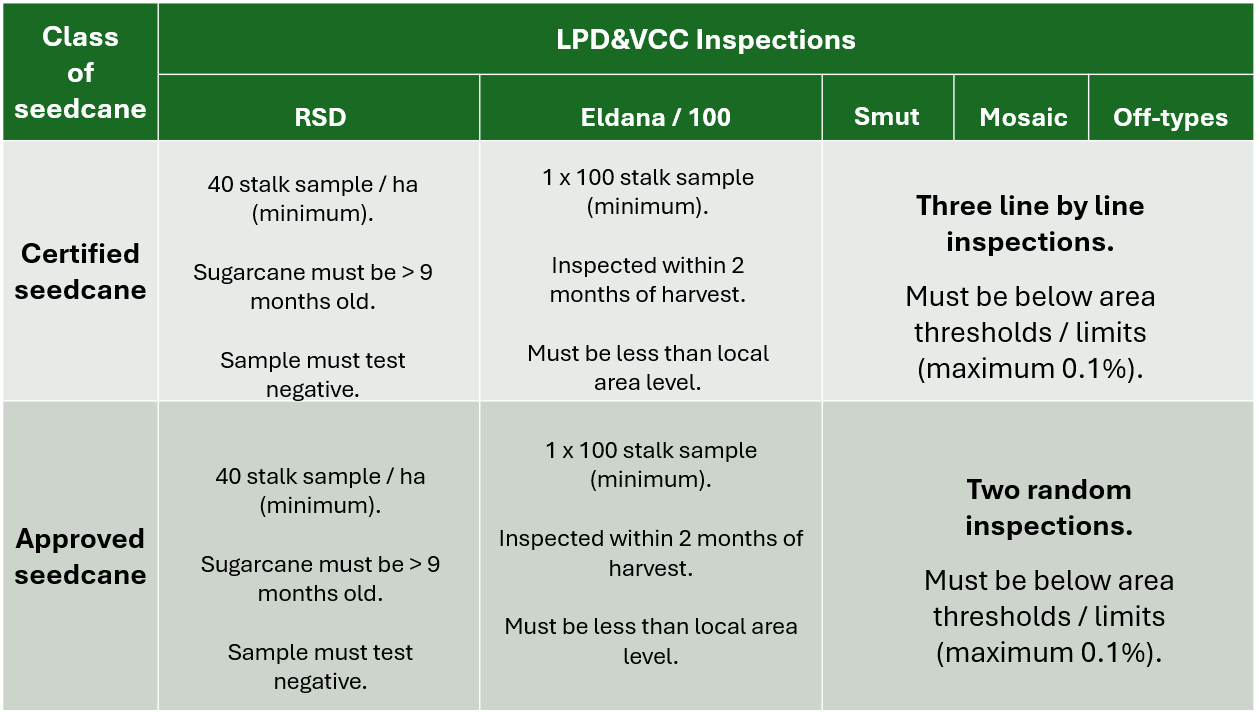
Requirements to establish a seedcane nursery
- Identify a potential certified or approved nursery site at least one year in advance and notify your SASRI Biosecurity Officer.
- All LPD&VCC certified and approved seedcane nurseries must be registered with the local LPD&VCC.
- Biosecurity teams need to conduct the required fallow period inspections.
- Tillage of the nursery site, except for crop removal and cover cropping, is not permitted 6 months before planting, so apply lime at the beginning of the fallow period.
The movement of seedcane between different LPD&VCC regions
The way forward and seedcane regulation
Growers have the option of:
- Producing certified and approved seedcane themselves in their own on-farm nurseries.
- Sourcing their certified seedcane from a local LPD&VCC registered cooperator for planting their own approved nurseries.
- Sourcing approved seedcane for planting commercial fields from a LPD&VCC registered cooperator.
Ultimately, seedcane regulations are aimed at ensuring the sustainability of all growers and this was the reason for the Seedcane 2023 campaign legislated by SASA Council, which required all commercial fields to be planted with either certified or approved seedcane. While several regions made good progress towards complying with the 2023 deadlinemany were still not compliant. For this reason, the SASA Council agreed to extend the deadline to 2028. Certified and approved seedcane is still in short supply in most regions. It is critical that growers embrace the seedcane regulation process as soon as possible to ensure that each region meets the 2028 compliance deadline.
For more information, please refer to SASRI’s Seedcane Production Manual.

